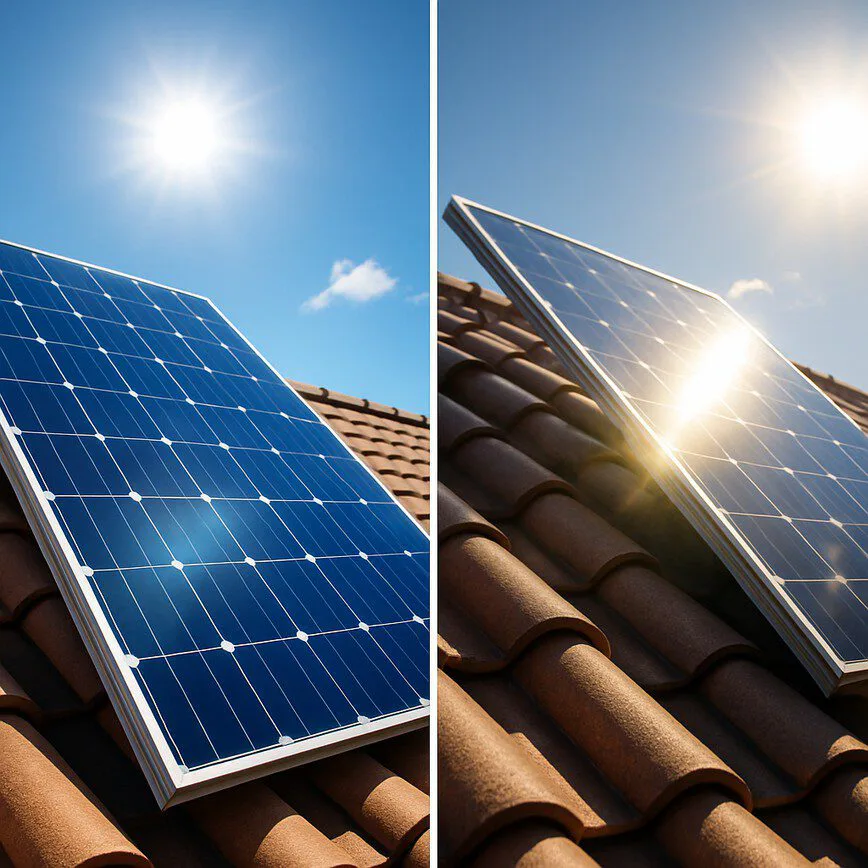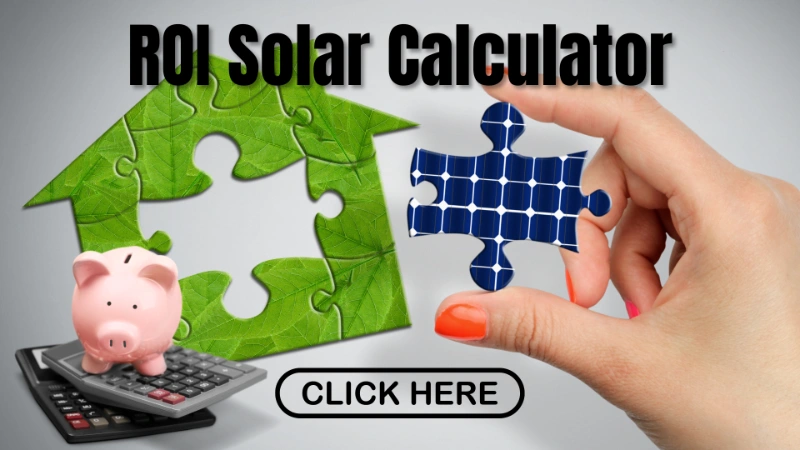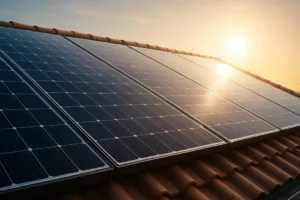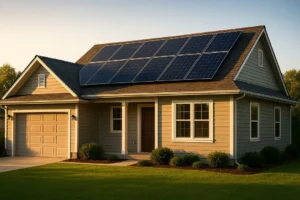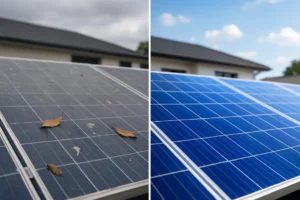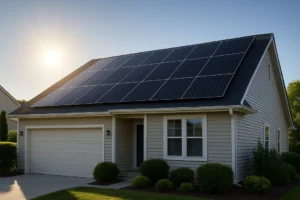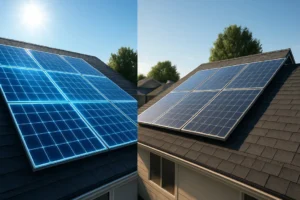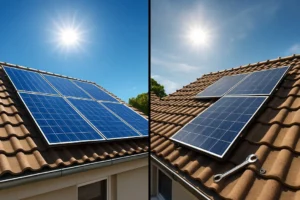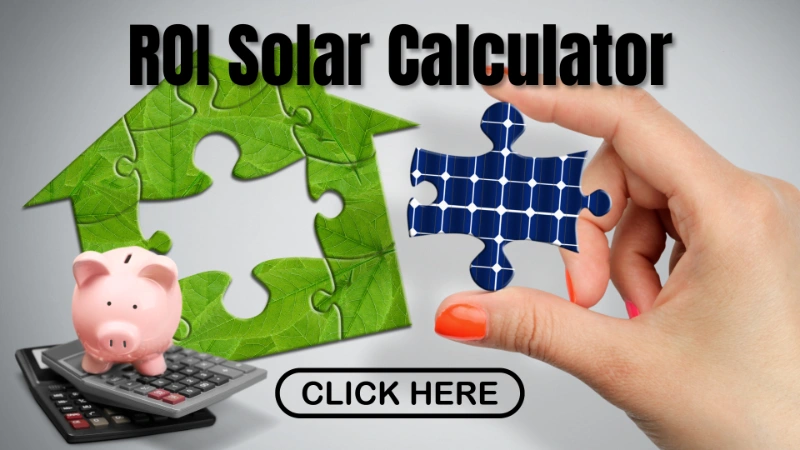You’ve made the smart decision to explore residential solar power, but to truly maximize your return on investment, the details matter. One of the most critical, yet often overlooked, factors is the tilt or angle of your solar panels efficiency. But how much does solar panel angle affect efficiency in the real world? The answer is: significantly.
Table of Contents
- The Core Principle: Why Solar Panel Tilt Matters
- So, How Much Does Angle *Really* Affect Efficiency?
- Finding the Optimal Solar Panel Angle: A Seasonal Breakdown
- The “Set It and Forget It” Approach vs. Seasonal Adjustments
- Factors Beyond Tilt: What Else Impacts Your Panel’s Performance?
- Maximize Your Investment with Expert Guidance
Getting the angle right can be the difference between a good solar investment and a great one. This seasonal guide will break down why tilt is so important, how to find the optimal angle for your home, and how it impacts your energy production throughout the year. As experts in residential solar solutions, we believe that an informed homeowner is an empowered one, and our comprehensive knowledge base is here to help you make confident decisions.
The Core Principle: Why Solar Panel Tilt Matters
The fundamental goal of a solar panel is to capture as much direct sunlight as possible. Solar photovoltaic (PV) cells are most productive when sunlight strikes their surface at a perpendicular, 90-degree angle.
Think of it like catching rain in a bucket. If you hold the bucket flat during a downpour, you’ll catch the maximum amount of water. If you hold it at a steep angle, most of the rain will glance off the side. Solar panels work the same way with photons from the sun.
The challenge is that the sun’s position in the sky is constantly changing, not just from dawn to dusk, but also from season to season. An angle that’s perfect in the high sun of summer won’t be as effective in the low sun of winter.
So, How Much Does Angle Really Affect Efficiency?
While the exact percentage varies based on your geographic location, improperly angled panels can lose anywhere from 10% to 25% of their potential energy output over a year. This is a substantial loss that directly impacts your energy savings and the payback period of your system.
For most homeowners with a standard fixed-tilt system, a professional installer will determine a “best fit” angle for year-round performance. However, understanding the seasonal dynamics allows you to appreciate the science behind your system and, for those with adjustable mounts, to actively boost your solar panel tilt efficiency. Using an ROI calculator can help you visualize how even a small percentage increase in efficiency translates to significant long-term savings.
Finding the Optimal Solar Panel Angle: A Seasonal Breakdown
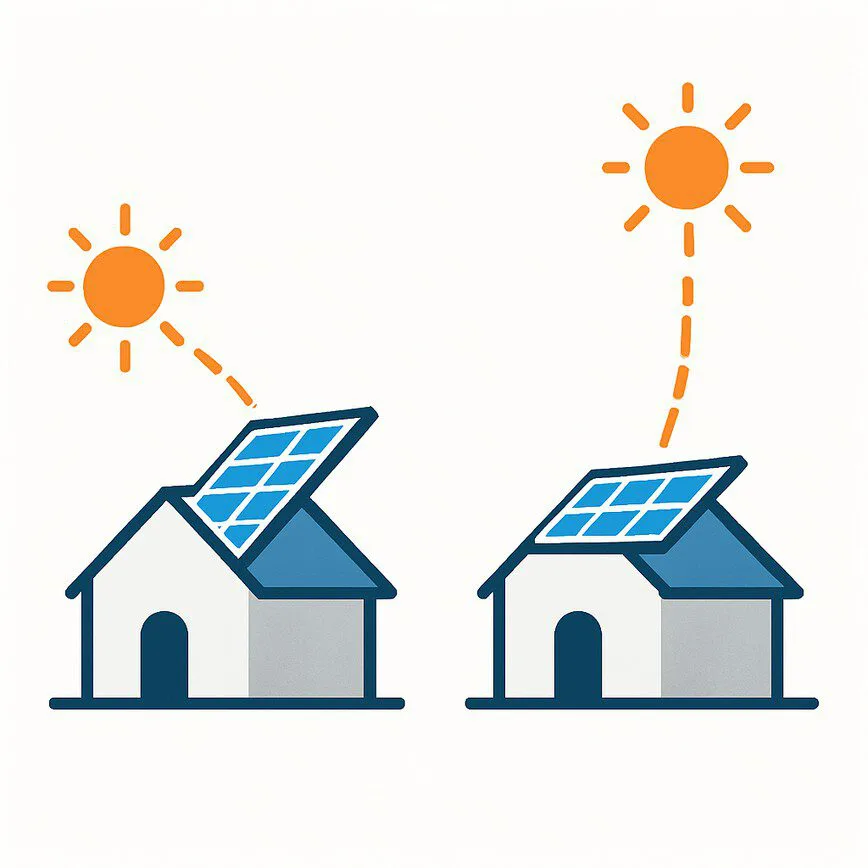
The sun is lower in the sky during winter and higher during summer. To maintain that crucial perpendicular relationship, the ideal panel angle must change accordingly. Here’s a look at the best solar panel angle for winter vs summer and the shoulder seasons.
(A good rule of thumb is to use your home’s latitude as a starting point.)
Best Solar Panel Angle for Winter
- The Sun’s Position: Low in the southern sky (in the Northern Hemisphere).
- The Goal: Tilt your panels up to “face” the low-hanging sun more directly.
- General Rule: Take your latitude and add 15 degrees. For example, if you live at 40° latitude, a 55° angle is a great target for winter.
- Added Benefit: A steeper angle helps snow and debris slide off more easily, keeping your panels clear and productive.
Best Solar Panel Angle for Summer
- The Sun’s Position: High overhead.
- The Goal: Lay your panels flatter to capture the direct, high-noon sun.
- General Rule: Take your latitude and subtract 15 degrees. For a home at 40° latitude, a 25° angle is ideal for summer.
Optimal Angles for Spring and Fall
- The Sun’s Position: At a midway point between its winter and summer extremes.
- The Goal: Find a balanced angle that performs well during these transitional months.
- General Rule: Set your panel’s tilt to be roughly equal to your latitude. A home at 40° latitude should have its panels set to a 40° angle.
The “Set It and Forget It” Approach vs. Seasonal Adjustments
- Fixed-Tilt Systems: For most homeowners, a fixed-tilt rooftop system is the most practical solution. Installers typically set the panels at an angle equal to the location’s latitude, providing a strong, year-round average performance without any need for maintenance.
- Adjustable Systems: For ground-mounted systems or installations with adjustable racking, changing the tilt twice a year (in spring and fall) can boost your annual energy production by another 4-8%. While it requires a little extra effort, this dedication to achieving the optimal solar panel angle can further accelerate your energy independence.
Factors Beyond Tilt: What Else Impacts Your Panel’s Performance?
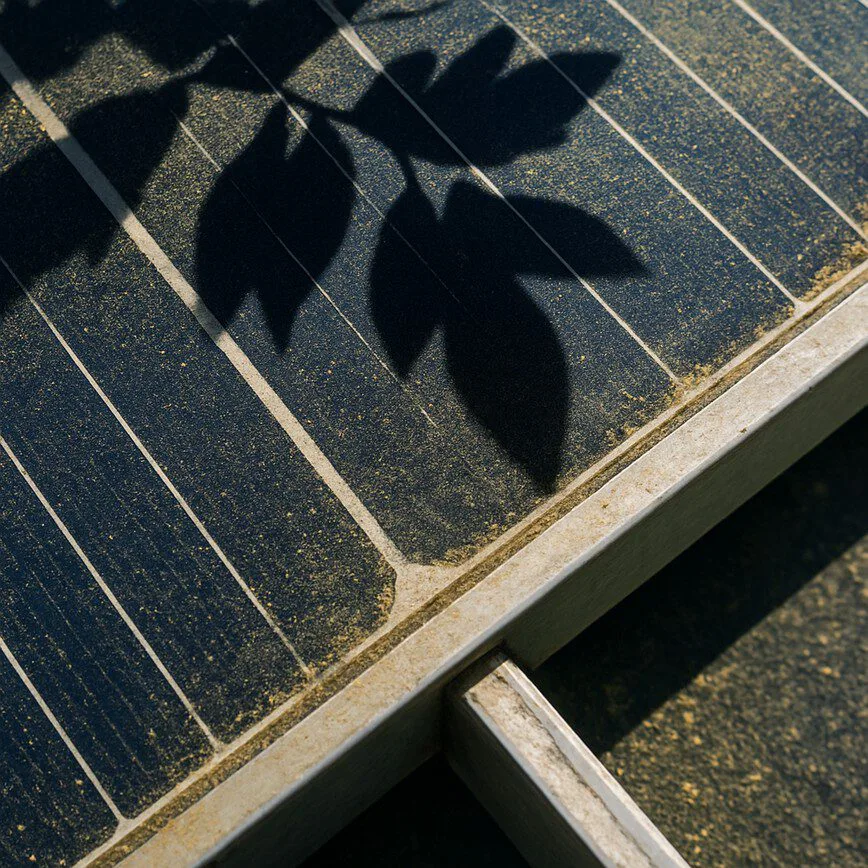
While tilt is a major player, it’s part of a larger team of factors that determine your system’s output.
- Orientation: In the Northern Hemisphere, south-facing roofs are the gold standard.
- Shading: Even partial shading from a tree or neighboring building can significantly reduce output.
- System Components: The quality of your inverter, wiring, and panels all play a role. Gaining a understanding the components of your solar system is foundational to appreciating how every part contributes to overall efficiency.
- Maintenance: Keeping panels free of dust, pollen, and grime ensures maximum light absorption.
Maximize Your Investment with Expert Guidance
Achieving the optimal solar panel angle is a perfect example of how expert knowledge can transform a good solar installation into a phenomenal one. At RenewGenius, our comprehensive solar knowledge base is designed to demystify these topics, ensuring you have the clarity and confidence to move forward.
By understanding how factors like seasonal tilt affect your output, you can better appreciate the performance of your residential solar system and the savings it generates month after month. The right angle doesn’t just produce more power—it produces more value.

